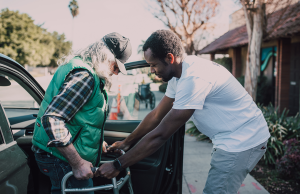
- Is a generous act still generous if the giver demands recognition? Is selfless behavior still selfless if it’s caused by a stroke?
- Generosity means “giving good things to others freely and abundantly”, and it’s basically the defining characteristic of the holiday season.
- Psychological, social, and situational factors can influence how generous someone is.
- Generosity can also stray into unhealthy territory when it’s unrelenting, controlling, or begrudging.
- Will you give freely and abundantly this year?
A California woman decided to donate one of her kidneys without specifying who would receive the transplant. A male stranger subsequently benefited from her healthy organ. The woman, who was a writer, was definitely not seeking anonymity. She chronicled her “nondirected donation” through a special Facebook group. Then she confronted friends who failed to acknowledge her generosity.
A Brazilian man became “pathologically generous” after experiencing brain swelling. He quit his insurance job and began selling French fries in the street. Except he didn’t charge any money for them. Much to his family’s frustration, when people asked for fries, he just gave them fries. His frontal lobe injury had caused an “excessive generosity disorder” that led him to the poorhouse, but it also generated greater personal happiness than he’d ever experienced before.
I juxtapose these true stories because they may help us fine-tune our own definitions of generosity. Is an act still selfless if you seek praise and recognition afterward? Can behavior still be considered generous if it’s a result of brain damage? As we begin our holiday shopping and gear up for Giving Tuesday (the Tuesday after Thanksgiving that’s marked for charitable giving and volunteering), we may start to think about who we’re helping when we give away our time and money. Are we ultimately trying to lift up other people—or ourselves? How can we be generous in a healthy, meaningful way? Let’s take a look at the psychology behind generous acts.

What Is Generosity? What Are the Benefits of Generosity?
According to the Science of Generosity Project at the University of Notre Dame, generosity is “the virtue of giving good things to others freely and abundantly”.
The impulse for humans to help one another seems to be hard-wired and intrinsically motivated (i.e., naturally gratifying). Our children appear to be born with a proclivity for cooperative behaviors, as are animals such as vampire bats, ants, and primates. But in an evolutionary, survival-of-the-fittest sense, why would we want to help other people at the expense of ourselves? We would seem to benefit more from selfishness, which is also hard-wired. So how does prosocial behavior help our own bottom lines?
For one, it makes us happy. Giving to others activates the same brain region (the mesolimbic reward system) that also lights up when you receive money, sex, or food, but to an even greater extent. And generous people tend to enjoy better health and longer lives. They also have happier marriages, according to the University of Virginia Marriage Project. Generosity and happiness seem to occupy a positive feedback loop, where one promotes the other.
All these innate benefits suggest that generosity might serve a higher purpose for the human species. Some researchers argue that giving helps stabilize society because it can “bring people together and encourage reciprocity”. There are theories of kin selection, group selection, reciprocal altruism, mate selection, and costly signaling theory to explain why we help each other. Clearly it may take a while longer for scientists to agree on exactly why giving feels so good. In the meantime, it might be revealing to examine what can encourage and discourage acts of generosity.
What Can Make People More Generous?
Here are some of the many factors that can influence human generosity, drawn heavily from the white paper “The Science of Generosity” by the Greater Good Science Center at the University of California, Berkeley:
- Music. Uplifting music makes people more likely to engage in high-cost helping behaviors, and people who listen to prosocial song lyrics as opposed to neutral song lyrics show an increase in tipping behavior.
- Television. Children’s shows like “Mister Roger’s Neighborhood” and “Sesame Street” have been shown to generate more prosocial behavior in preschoolers.
- Compassionate parenting. Though children naturally show tendencies toward fairness and cooperation, parents can still encourage generosity by acting as good role models and positively reinforcing prosocial behaviors.
- Nature of the recipient. People are more likely to act generously toward their family and close social ties (their in-group). People also prefer to give money to a specific person rather than to multiple or anonymous people, which is called the identifiable victim effect. Lastly, people are often influenced by their perceptions about the “deservingness” of the recipient. Unfortunately, these biases often fall along racial lines.
- Situational factors. The timing and setting of solicitations can influence how generous a person will be. For example, orderly environments can enhance generosity. And making people think about time and the future before requesting money can increase donations. In fact, a “future orientation” can make people more generous.
- Emotions. Showing people emotional videos can raise their empathy levels and make them more likely to help strangers. The use of children in storytelling can also increase generous behaviors.
- Hormones. Higher levels of testosterone are associated with lower generosity, while higher levels of oxytocin are associated with increased generosity.
- Genetics. Twin studies have demonstrated some heritability in prosocial behavior.
- Personality. Certain personality traits like agreeableness and humility have been linked to generosity. People may also identify as altruistic people through their religious values or a strong moral “principle of care”, and therefore act accordingly.
- Sex. Sexual competition can drive prosocial behaviors. For example, heterosexual men tend to give more money to attractive female fundraisers, and they’re more generous when their act of generosity is witnessed by a potential mate.
- Gender. Women may feel social pressure to act more selflessly than men, but biological differences may also account for variation. For example, the reward center in women’s brains seems to respond more to prosocial behaviors than the reward center in men’s brains.
- Economics. People from lower socioeconomic classes tend to give a larger proportion of their incomes to charity, and tend to exhibit more prosocial behavior in general. Middle class people and people with prestigious jobs tend to volunteer more. And of course, tax incentives can also influence generosity, especially in men.
- Gratitude. Studies have shown that expressing/practicing gratitude can lead to helping others more than oneself.
- Reputational concerns. People may try to build a reputation for generosity, which can benefit them in the long-term. Social gossip can increase this reputational concern.
- Nature. Feelings of awe, as when you gaze at a beautiful scene in nature, can elicit helpful behavior.
Successful nonprofit organizations know how to fine-tune their messaging around the factors above to encourage more people to donate their money, volunteer their time, and commit good deeds. For example, wealthier people tend to respond better when solicitations appeal to their personal agency, and poorer people tend to respond better when solicitations emphasize community and shared goals.
Are There Unhealthy Types of Generosity?
Just because generosity seems to be natural doesn’t mean it can’t become distorted or pathological. We’re all familiar with people who seem to give for all the wrong reasons. Gifts that don’t appear motivated by love or prosocial emotions can make recipients feel uncomfortable, not rewarded. You may not be as eager to open a holiday gift that was offered with the following types of generosity:
- Begrudging generosity, when the giver clearly receives no pleasure from giving
- Fluctuating generosity, when someone alternates between being very generous and very cheap or selfish
- Controlling generosity, when there are strings attached to the gift
- Unrelenting generosity, when the giver gives constantly and compulsively. This might be a sign of addiction or codependency. It might also be a way of disguising one’s feelings of inadequacy, and it can exhaust the energy of the giver.
- Tit for tat generosity, when two people continue to increase their mutual giving beyond what they want to spend, just to keep up with each other
- Guilt-driven generosity, as when someone volunteers more because they feel they did something wrong (an example of predispositional, not chronic, guilt)
And then there’s the matter of gift acceptance. How do you react if someone gives you a gift you don’t want, or that they didn’t want to give you? Receiving is a complex art as well. But that’s a different article…
On Kidneys and Hair Combs
So let’s return to our original case studies, the kidney woman and the French fry man. Yes, the kidney woman told her donation story liberally and wanted copious social feedback on her sacrifice, but she also allowed part of her body to be surgically removed in order to save the life of a stranger. That seems like free and abundant giving. And in the case of the Brazilian man who couldn’t stop giving away his French fries, neuroscientists believe that his profuse generosity was always there to begin with; the brain injury just overrode his frontal lobe’s hypervigilant hall monitor that tries to ensure we don’t turn into pleasure-seeking machines.
So the Brazilian man gave abundantly, and he was genuinely happy because of it. But did he give freely? That question may be harder to answer. Bipolar disorder has also been known to cause reckless generosity during manic episodes, and certain dopamine-stimulating drugs can do the same thing. But it’s difficult to determine where pure generosity morphs into excessive generosity disorder. For example, consider the following case study:
On Christmas Eve, a wife decided to chop off and sell her long, luxurious hair in order to buy a watch chain to complement her husband’s beloved pocket watch. Meanwhile her husband sold the pocket watch he cherished in order to buy an ornamental comb for his wife’s beloved hair. On Christmas morning the spouses exchanged their gifts, revealing their mutual sacrifice. Neither could use the other’s gift, but they recognized the love that inspired it.
Would you be willing to diagnose the characters in “The Gift of the Magi” with reckless generosity? Or do you find O. Henry’s famous story inspiring? Your answer may help shed light on your own giving style as we seek to express our love for each other this holiday season.













